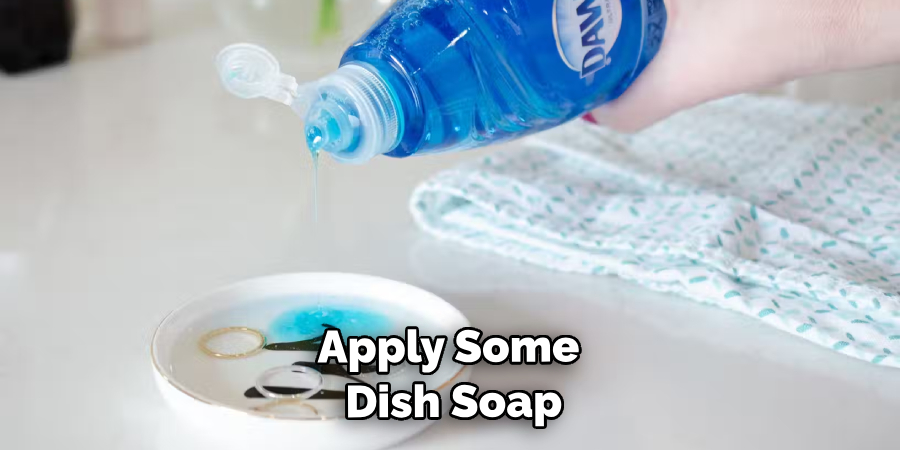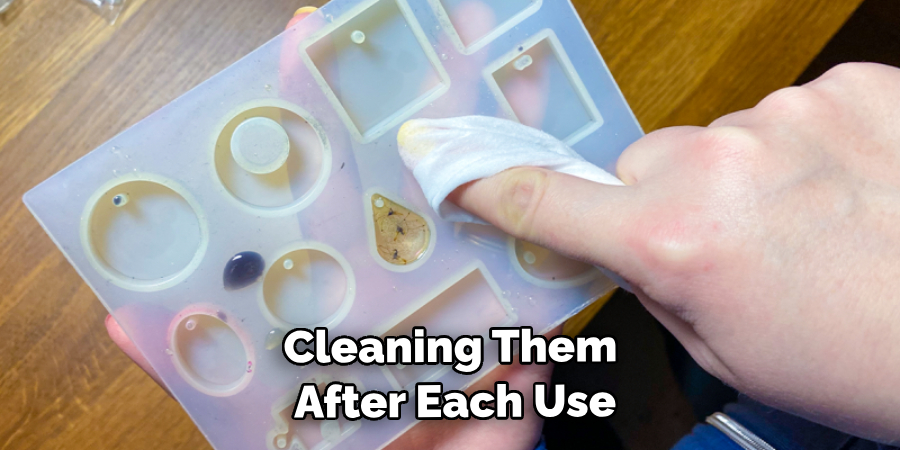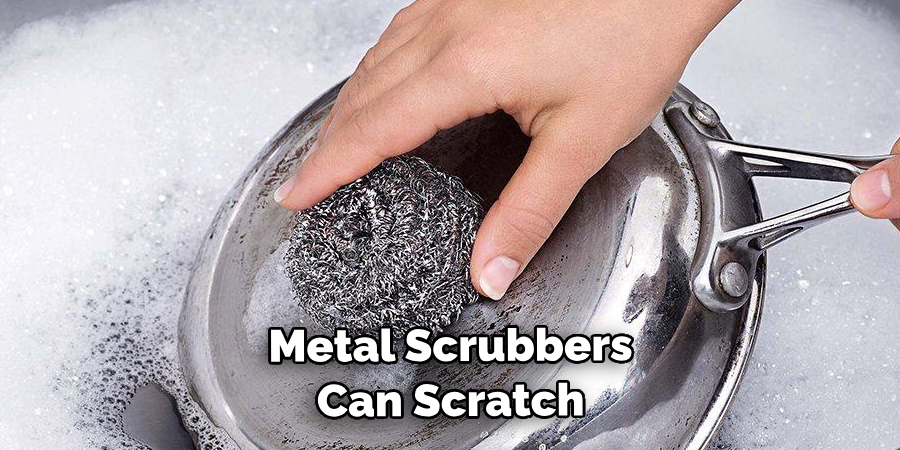Do you love getting creative in the kitchen, from baking cakes to making handmade chocolates? Whether your recipes involve molds and intricate decorations or more simple shapes, having the right tools can make creating a delicious treat much easier. With silicone molds being increasingly popular for crafting desserts and other goodies, it’s essential to know how to clean them properly so you can reuse them repeatedly.

Silicone molds have many advantages, such as being flexible and non-stick, making removing your creations without damaging them easier. However, they can also easily trap residue and bacteria if not cleaned correctly, which could affect the taste of future treats.
Here, we’ll discuss why washing your silicone molds is important, as well as provide some handy tips on how to wash silicone molds quickly!
What are the Benefits of Washing Silicone Molds?
Although silicone molds are generally considered to be low maintenance and durable, washing them after each use is crucial for several reasons:
- Removing Residue and Bacteria: As mentioned before, food residue and bacteria can build up in the grooves of your mold, especially if you’re using it for sticky or oily recipes. By washing your silicone mold with soap and hot water, you can ensure that any remaining residue and bacteria are eliminated and don’t transfer to your next treat.
- Preventing Cross-contamination: If you’re using the same mold for different types of recipes, washing it between each use helps prevent cross-contamination. This is especially important if you or anyone consuming your treats has allergies or dietary restrictions.
- Preserving the Mold’s Lifespan: Regularly washing your silicone molds can help extend their lifespan, as built-up residue and bacteria can cause them to deteriorate over time. Proper cleaning can also prevent unwanted odors or discoloration from developing on your molds.
Once you understand the importance of washing your silicone molds, let’s dive into some tips for doing it effectively and efficiently!
What Will You Need?

Before we get into the cleaning process, make sure to gather these items:
- Hot Water: Hot water is essential for efficiently removing residue and bacteria from your silicone mold.
- Mild Dish Soap: A mild dish soap will be gentle on your molds while effectively cleaning them.
- A Soft Sponge or Cloth: Using a soft sponge or cloth will prevent any scratches or damage to your molds.
- A Toothbrush: A toothbrush is handy for getting into small crevices and hard-to-reach areas of your mold.
- Baking Soda: Baking soda can be a gentle abrasive to help remove stubborn residue from your silicone molds.
Once you have these items, it’s time to get cleaned!
10 Easy Steps on How to Wash Silicone Molds
Step 1. Empty the Mold:
Begin by removing any leftover food from the mold. Be gentle to avoid damaging the mold’s shape or structure. You can use your finger or a spatula to scrape any excess food.
Step 2. Rinse with Hot Water:
Hold your silicone mold under warm to hot running water. This preliminary rinse helps dislodge any additional food particles and loosens hardened residue. Be sure to rinse both the front and back sides of the mold.
Step 3. Apply Dish Soap:
Next, apply a few drops of the mild dish soap to your soft sponge or cloth. Remember, choosing a non-abrasive cleaning tool is crucial to prevent scratching the mold’s surface. Gently scrub the mold, focusing on areas that look stained or still have food residue.
Step 4. Use a Toothbrush for Detailed Cleaning:

If your silicone mold has complex shapes or small crevices, now is the time to use your toothbrush. Apply some dish soap to the bristles and gently scrub those hard-to-reach areas to clear any remaining residue. Remember to be gentle to avoid causing any damage to the mold.
Step 5. Rinse Again:
Once you’ve thoroughly scrubbed your silicone mold, it’s time to rinse it under warm to hot water again. Make sure to remove all the soap suds and any dislodged food particles. Pay extra attention to the intricate areas where soap could be trapped. The goal is to have a completely clean and soap-free mold.
Step 6. Check for Remaining Residue:
After rinsing, scrutinize your silicone mold. If you notice any remaining residue or stains, make a paste of baking soda and water. Apply this to the stained areas and gently scrub with your toothbrush. Once you’ve addressed these areas, rinse the mold with warm to hot water to remove the baking soda paste.
Step 7. Dry the Mold:
After thoroughly washing and rinsing your silicone mold, it must dry it completely to prevent moisture build-up, which can lead to mold and mildew growth. Gently shake off the excess water and use a clean, dry cloth or towel to pat dry the mold. You can also leave it to air dry on a drying rack or clean countertop. Ensure it’s scorched before storing it away to maintain its longevity and hygiene.
Step 8. Store Your Silicone Mold Properly:
Once your silicone mold is dry, store it in a cool, dry place away from direct sunlight. It’s best to keep it in a closed cupboard or drawer to prevent dust accumulation. Do not fold or bend the molds as it may distort their shape. If you have multiple silicone molds, stack them carefully, ensuring they maintain their shape and form. Proper storage will ensure your silicone molds retain their flexibility and non-stick qualities for future use.
Step 9. Regular Maintenance:

To keep your silicone molds in optimal condition, cleaning them after each use is good practice. Additionally, consider doing a deep clean every few months, especially if you frequently use them. This involves soaking your molds in a mixture of hot water and vinegar (1:1 ratio) for about an hour, which can help remove stubborn stains and lingering odors. After soaking, wash, rinse, and dry as per the steps above. Regular maintenance will ensure your silicone molds last longer and continue to produce high-quality treats.
Step 10. Handle Stains and Odors:
In case you notice stubborn stains or persistent odors even after regular cleaning and maintenance, don’t worry. Soak your silicone molds in equal parts white vinegar and water for a couple of hours. The vinegar will help break down the stains and neutralize any odors. After soaking, wash and rinse them as normal, and ensure to dry them entirely before storage. With these steps, your silicone molds should be as good as new, ready for your next baking adventure!
By following these ten steps, you can ensure your silicone molds stay clean and in top condition for all your future baking needs. Properly maintaining and cleaning your silicone molds will extend their lifespan and ensure the safety and hygiene of your food creations.
5 Additional Tips and Tricks
- Avoid Sharp Objects: To prolong the lifespan of your silicone molds, avoid using sharp objects that could potentially scratch or puncture them.
- Use Warm Water and Mild Soap: Silicone molds can be washed with warm water and mild dish soap. Avoid using harsh chemicals as they might degrade the silicone material.
- Baking Soda for Stubborn Residue: If you come across stubborn residue that won’t come off easily, mix baking soda and water and gently scrub the mold using a soft cloth or sponge.
- Air Dry or Towel Dry: Air dry your silicone molds or towel dry them after washing. Never use heat, as it can deform the mold.
- Storage: Store your silicone molds flat in a cool, dry place to maintain their shape and prevent damage.
With these additional tips and tricks, you can ensure that your silicone molds are cleaned properly and last longer.
5 Things You Should Avoid

- Avoid Using Metal Scrubbers: Metal scrubbers can scratch and damage your silicone molds. Always opt for non-abrasive sponges or cloths when cleaning.
- Avoid Dishwasher’s Hottest Cycle: While silicone molds are dishwasher-safe, they can warp in the dishwasher’s hottest cycle. Stick to a normal or gentle cycle.
- Avoid Harsh Chemicals: Cleaning products with harsh chemicals can degrade the silicone material. Stick to mild dish soap for cleaning.
- Avoid Direct Sunlight: Don’t leave your silicone molds exposed to direct sunlight for an extended period, as UV light can damage the material.
- Avoid Storing with Sharp Objects: Be cautious about where you store your silicone molds. Keeping them with sharp objects could lead to unwanted punctures or cuts.
By avoiding these things, you can ensure that your silicone molds remain in good condition and last long.
Conclusion
Overall, washing silicone molds is a surprisingly easy process! All you need is some soap and warm water, and your molds will be good as new in no time. Keeping up a regular cleaning schedule is essential as it helps to ensure the longevity of your molds and also leads to better performance when baking or cooking with them.
Cleaning your silicone molds can seem daunting, but with the tips provided here, you can ensure that your molds stay in top condition for years to come. Remember also to check the manufacturer’s instructions for specific cleaning directions before you attempt any deep cleaning processes.
Now that you know how to wash silicone molds, why not give it a try today?